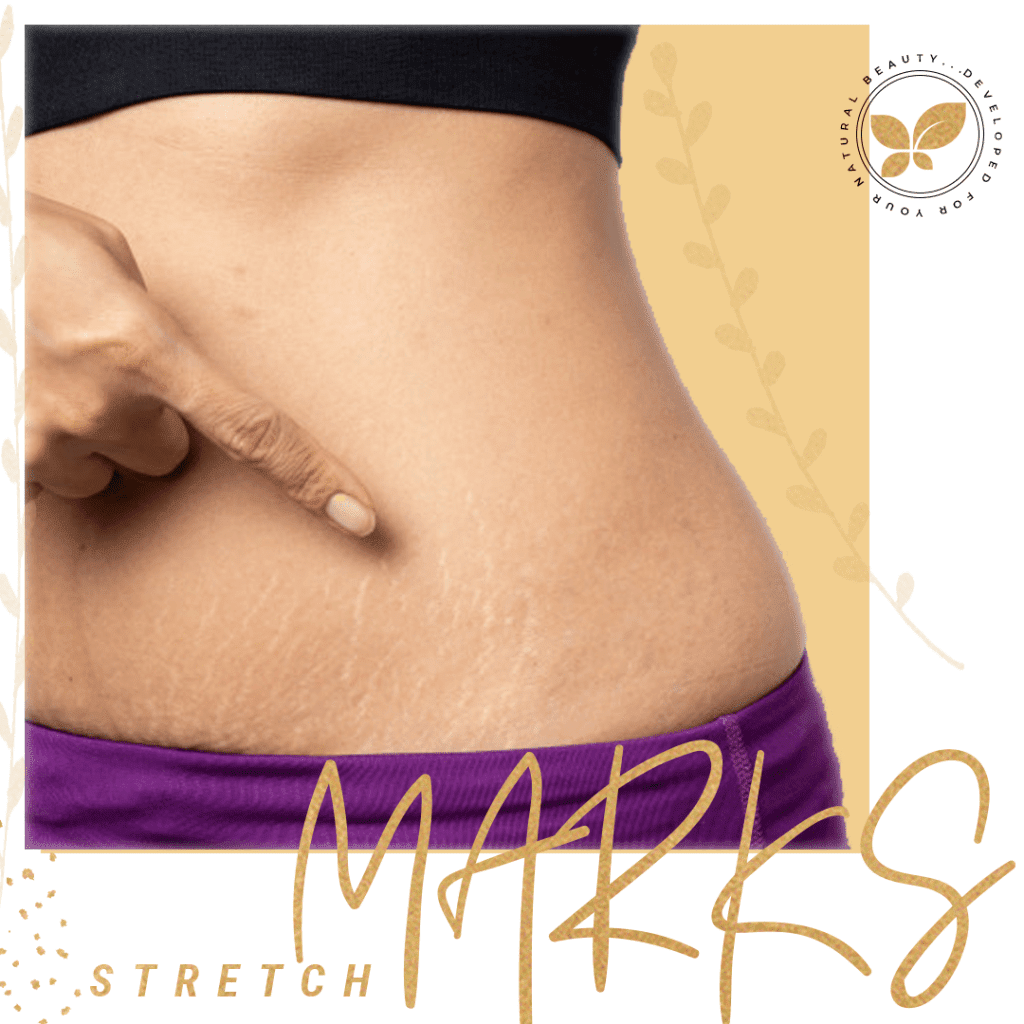What are stretch marks?
Stretch marks are set-in streaks that show up on your stomach, breasts, hips, butt, and thighs. These long, thin, rippled marks are also called stria. If you have stretch marks, you probably wish they’d go away. These grooves or lines in your skin aren’t harmful to your health, but they aren’t great to look at, either.
And even though they’ll never really go away, they might fade over time or with help from certain products and procedures such as moisturizing creams and oils riched with Vitamin E.
Stretch Marks Causes:
-Stretch marks happen when your body grows quickly for any reason. Your skin can’t stretch enough to keep up.
-Collagen is a protein that makes your skin more elastic. If your skin doesn’t have enough, the marks may show up as it stretches.
You may get stretch marks because of:
-Quick weight gain (this affects both men and women).
-Childhood growth spurts during puberty. Make sure kids know this is normal and that childhood marks may fade as they get older.
-Pregnancy is a result of stretched skin and a surge in hormones that weakens skin fibers. They might fade as you shed pounds after the baby is born.
-Breast implant surgery.
-Bodybuilding, even those who have little fat can get them where their muscles bulge.
-Marfan syndrome, a genetic disease that weakens your skin fibers and causes unusual growth.
-Ehlers-Danlos Syndrome (EDS), a group of conditions that result from genetic changes to collagen, a protein in your body.
-They also run in families.
Stretch Mark Symptoms:
New stretch marks may feel slightly raised and itchy. These rippled, streaky lines in your skin come in different colors. They fade from red or pink to purplish-blue to thinner, pale, more scar-like streaks over time.
You may not notice them as much.
They can show up on many parts of your body.
Some people are more likely to develop stretch marks:
Females generally, pregnant ladies especially
Having a family history of stretch marks
Being overweight
Gaining or losing weight quickly
How to avoid stretch marks.
1. Control your weight
One of the most helpful things you can do to prevent stretch marks, whether you’re pregnant or not, is to maintain a healthy weight. Stretch marks can happen when your skin pulls apart quickly due to rapid weight gain. You may also notice stretch marks after rapid weight loss. Some people develop stretch marks during growth spurts, such as during puberty. Other people, like bodybuilders, notice them after big gains from working out or using steroids. Working to control body changes from happening too quickly may be your best bet. Eat a healthy diet and exercise to help you manage your weight. If you do notice rapid weight gain or weight loss, it may be a good idea to visit your doctor to find out why.
2. Stay hydrated
Drinking enough water may help keep your skin hydrated and soft. Soft skin doesn’t tend to develop stretch marks as much as dry skin does. The Institute of Medicine’s current recommendations for daily water intake is 104 ounces for men and 72 ounces for women. Drinking caffeinated beverages, like coffee, may actually increase your risk of developing stretch marks. If you drink coffee, make sure you’re balancing out your fluid intake with plenty of water, herbal tea, and other caffeine-free fluids.
3. Eat a nutrient-rich diet
Stretch marks may also occur if you lack nutrition in certain areas. Eating foods that boost skin health may help. Make sure your diet includes foods rich in:
vitamin C
vitamin D
vitamin E
zinc
protein
One way to make sure you’re getting a variety of nutrients is to choose unprocessed foods in various colors. For example, a breakfast of eggs, whole-wheat toast, and mixed berries add many colors to your plate while packing in a variety of nutrients.
4. Include vitamin C in your diet
Collagen plays a role in keeping your skin strong and elastic. It helps reduce the appearance of wrinkles, but it may also be important for preventing stretch marks. Vitamin C is an important nutrient for the development of collagen. Vitamin C can be found in many fruits and vegetables. Citrus fruits, such as oranges and lemons, are especially good sources of vitamin C.
5. Soak up some vitamin D
One study found a correlation between low levels of vitamin D and the incidence of stretch marks. More research is needed, but results suggest that maintaining healthy levels of vitamin D may reduce your risk of stretch marks. The easiest way to get vitamin D is through exposure to the sun. The vitamin is also commonly added to bread, cereal, and dairy products like milk or yogurt.
6. Eat foods rich in zinc
Zinc is an important nutrient for skin health. It helps reduce inflammation and plays a role in the wound healing process. There is very little evidence to date of a connection between zinc and stretch marks, but including zinc-rich foods in your diet, such as nuts and fish, may help keep your skin healthy.
7. Treat fresh stretch marks before it getting deeper
By moisturizing and nourishing your skin daily
use a moisturizer cream or oils with some Vitamin E oil added to it to get better and faster results.







